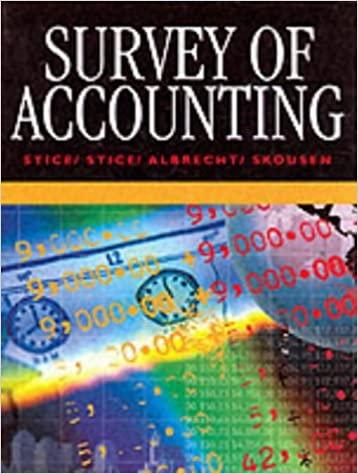Durham Company often purchases common stocks of other companies as long-term investments. At the end of 1999,
Question:
Durham Company often purchases common stocks of other companies as long-term investments. At the end of 1999, Durham held the common stocks listed. (Assume that Durham Company exercises no significant influence over these companies; i.e., they are classified as available-for-sale securities.)
\begin{tabular}{ccc}
\hline Corporation & \begin{tabular}{c}
Number of \\
Shares
\end{tabular} & \begin{tabular}{c}
Total Cost \\
per Share
\end{tabular} \\
\hline A & 2,000 & $\$ 70$ \\
B & 3,000 & 50 \\
C & 1,500 & 148 \\
D & 1,000 & 82 \\
\hline
\end{tabular}
Additional information for 1999:
Sep. 30 Durham received a cash dividend of $\$ 2.50$ per share on Corporation A stock.
Dec. 31 The market prices were quoted as follows:
Corporation A stock, $\$ 64$; Corporation B stock, $\$ 48$;
Corporation C stock, $\$ 150$; Corporation D stock, $\$ 78$.
Required: 1. Illustrate how these investments would be reported on the balance sheet at December 31, 1999, and prepare the adjusting entry at that date. 2. What items and amounts would be reported on the income statement for 1999? 3. Prepare the journal entry for the sale of Corporation D stock for $74 per share in 2000. 4. Interpretive Question: Why are losses from the write-down of available-for- sale securities not included in the current year's income, whereas similar losses for trading securities are included?
Step by Step Answer:

Survey Of Accounting
ISBN: 9780538846172
1st Edition
Authors: James D. Stice, W. Steve Albrecht, Earl Kay Stice, K. Fred Skousen





